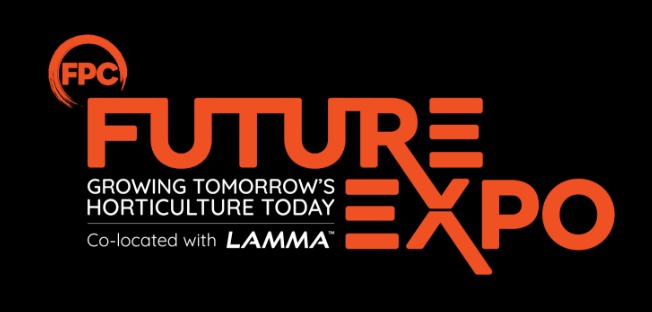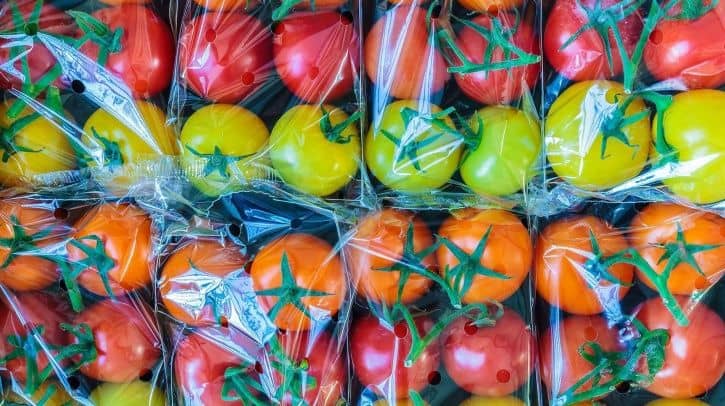From European plastic bans to consumers pushing for what they perceive to be more sustainable packaging, produce companies are finding ways to maintain or improve shelf life while contributing to a circular economy.
Perceptions around plastic packaging in the produce industry aren’t monolithic. They vary from person to person, from stakeholder to stakeholder, and frankly, they depend on whom you ask.
Meanwhile, there seems to be no master algorithm that accounts for all the supply chain and manufacturing variables (including weight, carbon footprint, food waste/shelf life/spoilage properties and even the cost of mining ore in the case of aluminium or steel) that might crown a single winner of the most sustainable material sweepstakes. It’s completely application-dependent and may look different depending on a CPG’s goals or values.
It’s undeniable that there has been a recent push for a reduction of plastic in produce packaging, one that has been driven by laws, bans, and consumer demand.
The trend is propelling fruit and vegetable producers to investigate alternatives to their existing plastic packaging formats. In turn, this is driving a conversation asking whether plastic alternatives are actually more sustainable for fruits and vegetable packaging.
Some countries are implementing laws and bans to eliminate single-use plastic used for certain items, like produce. On Jan. 1, France banned single-use plastic packaging for 30 types of fruits and vegetables as a part of a 2020 French law that aims to promote a circular economy and minimize waste.
This ban comes at a time when most major global consumer products manufacturers have committed to reducing their use of plastic. Since France is one of the first large global markets requiring producers to switch from plastic to paper and more sustainable packaging, global manufacturers will be watching closely to see how consumers respond, the cost of switching, and the impact on the market for paper-based packaging.
While many products—like bell peppers, cucumbers, cabbage and potatoes are subject to the ban under French law, some other product types have a longer deadline, until 2023 or even 2024, to remove the use of plastic.
Similar laws are being observed within certain countries and regions. In Spain, the sale of produce weighing less than 1.5 kg in plastic will be banned by 2023. A plastic packaging tax (PPT) has also been implemented in Europe and is under review for implementation by several countries including the UK, Italy, and the Netherlands.
“We expect a domino effect throughout the globe,” says Darren Lynch, Vice President of Consulting at GEP, a supply chain consulting and strategy firm. “There are similar-themed legislations in various stages of review in the UK, Spain, China, and India. The market leaders have already jumped on this and see it as an opportunity.
Environmental packaging is a unique opportunity for brands, and companies should take advantage and move quickly now.”
Is plastic necessary to minimize food waste?
While there are many alternative materials and strategies to plastic, including the use of sugar cane fibres, wood pulp fibres, and other biodegradable materials, there are significant shortages on commodities like pulp and paper, which is contributing to price increases and inflation.
“In Europe, finished paper prices in most markets have increased by more than 10% over the last 12 months,” Lynch says. “While this began due to pent-up demand and a greater shift to e-commerce, it is being sustained by the push towards more sustainable packaging. Additionally, there are searches underway to meet this new law with less expensive alternatives, which in and of itself may not be the most economically friendly in the long run.”
As new legislation forces produce growers to think differently about their packaging and look for alternatives, it’s becoming apparent that these more sustainable materials may have environmental impacts of their own. Regardless, Parkside, a UK-based compostable and sustainable packaging supplier, predicts to see more countries across the EU and potentially the U.S. start to adopt similar legislation over the next 5 to 10 years.
“There is no silver bullet for creating the perfect packaging,” Staci Bye, Business Unit Manager, Parkside. “All materials have their drawback whether carbon or water footprint, use of fossil fuels, recyclability, use of recycled materials, and so on. The key is that all brands optimize what they do by following the principles of the waste hierarchy in their design thinking.”
According to the Food and Agriculture Organization of the United Nations, one-third of food is lost or wasted globally every year, contributing to 8% of greenhouse gases emitted. And fruits and vegetables have the highest wastage rates of any food as nearly half of all fruits and vegetables are wasted globally every year, according to the UN Environment Program.
“Fresh produce waste contributes to approximately 8% of global carbon dioxide emissions, yet the plastic packaging used to protect and reduce this number represents a very small percentage of the total plastic packaging used,” says Gary Ward, CTO of StePac, a manufacturer of breathable modified atmosphere bags and liners for fresh produce.
While plastic packaging can keep produce fresh for longer periods of time, an 18-month study that was conducted by Wrap, a British sustainability charity, discovered that produce wrapped in plastic packaging forced consumers to purchase more fruit and vegetables than they needed, which resulted in more food waste.
The study also found that if apples, bananas, broccoli, cucumber, and potatoes were sold loose rather than packaged in plastic, it could save more than 10,300 tons of plastic and 100,000 tons of food from being wasted every year.



